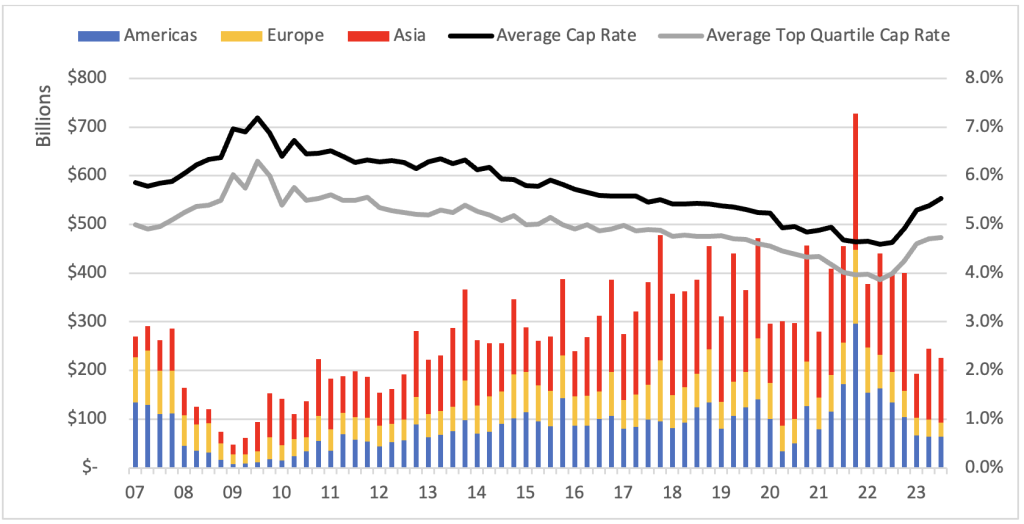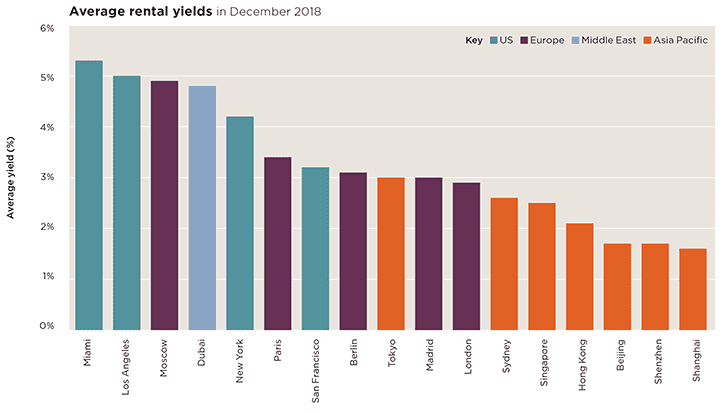3A. ആഗോള ഉള്ളടക്കം: റിയൽ എസ്റ്റേറ്റ് നിക്ഷേപത്തിന്റെ ഗുണങ്ങളും ദോഷങ്ങളും
പാഠ പഠന ലക്ഷ്യങ്ങൾ:
- Recognize real estate as a tangible asset with inherent value, offering stability that is less susceptible to market volatility compared to intangible assets.
- Explore the generation of passive income through rental properties in high-demand markets across the globe, providing consistent cash flow.
- Understand the potential for capital appreciation in various international real estate markets where property values are likely to increase over time.
- Appreciate the diversification benefits of real estate, which can mitigate risks when combined with other types of investments.
- Learn about the power of leverage in real estate investments, allowing investors to maximize potential returns by controlling more valuable assets.
3A.1 Advantages of Investing in Real Estate
Real estate investing on a global scale offers many benefits, including financial stability, diversification, and long-term wealth building.
- Tangible Asset
Real estate is a physical asset that retains intrinsic value, unlike stocks, which can become worthless. This makes it a safer long-term investment for many, especially in regions where inflation erodes the value of currency. - Passive Income through Rental Properties
Globally, owning rental properties can generate a steady stream of passive income. Countries like the U.S., ഓസ്ട്രേലിയ, കൂടാതെ കാനഡ offer rental markets with high demand, allowing investors to rent out properties and earn consistent income. - Capital Appreciation
In many global markets, such as Singapore, New York, or Dubai, real estate values tend to appreciate over time. Investors who hold property in these markets can expect significant returns through both rental income and increased property value. - വൈവിധ്യവൽക്കരണം
Real estate investment provides an opportunity to diversify an investment portfolio. Investing in property can reduce risk when combined with stocks, bonds, and other financial instruments. - Leverage Opportunities
Real estate allows investors to use leverage (borrowed capital) to maximize returns. By securing a mortgage, investors can control a more valuable asset than they could afford outright, amplifying their potential returns on investment.
ചിത്രം: Average Rental Yields in December 2018
വിവരണം:
This bar chart shows the average rental yields across major cities worldwide as of December 2018. The cities are grouped and color-coded by regions: US (blue), Europe (purple), Middle East (gray), and Asia Pacific (orange). Miami and Los Angeles rank the highest with yields close to 5-6%, indicating lucrative rental income potential. In contrast, cities like Shanghai and Shenzhen have the lowest yields, at approximately 2%, suggesting higher property prices or lower rental demand. This chart helps illustrate the variability in rental yield percentages based on region and city, offering insights into global real estate investment opportunities.
പ്രധാന കാര്യങ്ങൾ:
- Miami and Los Angeles lead globally with rental yields of nearly 5-6%, making them attractive for rental property investments.
- European cities like Paris and Berlin provide moderate rental yields, offering steady but less aggressive income compared to U.S. cities.
- Asian cities, such as Shanghai and Shenzhen, have lower rental yields, reflecting high property values and limited rental income potential.
- Regional differences are significant, with U.S. and Middle Eastern cities showing generally higher rental yields compared to Asia Pacific.
- Economic factors, housing demand, and regional property markets directly influence these yield percentages.
Application of Information:
This data is valuable for real estate investors looking to compare global markets and target cities with higher rental yields for maximizing returns. It highlights the importance of regional and economic factors in rental yield variations, helping learners and investors understand where to allocate resources effectively. Additionally, it emphasizes the need for market-specific analysis to balance risk and return when investing in rental properties globally.
3A.2 Disadvantages of Investing in Real Estate
Real estate, while lucrative, carries some notable downsides globally:
- High Upfront Costs
Buying property involves substantial upfront costs, including down payments, legal fees, and taxes. In cities like New York, Tokyo, or London, these costs can be prohibitive for new investors. - Market Volatility
Real estate markets can fluctuate depending on economic conditions, interest rates, and local demand. For example, during the 2008 financial crisis, property values in the U.S. ഒപ്പം Europe plummeted, leading to significant losses for investors. - Property Management Challenges
Owning and managing real estate can be time-consuming and costly. Property maintenance, repairs, and tenant issues are all potential problems, especially in markets like Brazil അല്ലെങ്കിൽ South Africa, where infrastructure can be less reliable. - Limited Liquidity
Real estate is not as liquid as other forms of investment, such as stocks or bonds. If an investor needs to sell quickly, they may face difficulties, especially in slower markets. - Regulatory Barriers
Countries like China ഒപ്പം Thailand have strict regulations on foreign property ownership, which can limit international investment opportunities.

ചിത്രം: Global Real Estate Investment and Cap Rates (2007-2023)
വിവരണം:
This chart shows global real estate investment trends from 2007 to 2023, segmented by region: Americas (blue), Europe (yellow), and Asia (red). The vertical bars represent annual investment volumes in billions of dollars, while the black and gray lines track the average cap rate and the average top quartile cap rate, respectively. The cap rate, or capitalization rate, measures real estate return potential and is shown as a percentage on the secondary axis. Over time, the global investment trend fluctuates, with notable peaks and troughs reflecting market conditions, such as the 2008 financial crisis and post-pandemic recovery in 2021-2023.
പ്രധാന കാര്യങ്ങൾ:
- Investment volumes increased significantly after the 2008 financial crisis, peaking around 2015-2019, followed by a decline during the pandemic.
- Asia’s investment share (red bars) has grown steadily over the years, reflecting its rising influence in global real estate markets.
- ദി cap rate (black line) trends downward, indicating lower expected returns due to increasing property prices and reduced risk premiums.
- A sharp spike in 2021-2023 reflects post-pandemic recovery, with a temporary increase in both cap rates and investment activity.
- Regional variations in investment volumes highlight different market dynamics across the Americas, Europe, and Asia.
Application of Information:
This chart is useful for investors analyzing global real estate trends to identify periods of high activity and favorable cap rates. Understanding regional investment shifts and cap rate dynamics helps users optimize investment timing and location selection. Additionally, the data offers insights into risk-return trade-offs across different markets, allowing learners to make informed real estate investment decisions.
3A.3 Common Misconceptions about Real Estate Investing
- “Real Estate is Risk-Free”
Some believe real estate is a risk-free investment. However, global markets fluctuate, and external factors such as recessions, political instability, or natural disasters can severely impact property values. - “You Can Get Rich Quickly in Real Estate”
While real estate can be profitable, it is not a get-rich-quick scheme. It often requires long-term planning, financial management, and ongoing maintenance to see significant returns. - “Only Large Investors Can Succeed”
Many believe only large institutional investors or wealthy individuals can succeed in real estate. However, through tools like REITs അല്ലെങ്കിൽ crowdfunding, small investors can also participate in real estate markets globally.
പ്രധാന പാഠ വിവരങ്ങൾ:
- Real estate provides a stable, tangible investment option, often retaining value and providing security even in fluctuating economic conditions.
- Passive income through rental properties is a key advantage, with markets like the U.S., Australia, and Canada offering robust rental demand.
- മൂലധന വിലമതിപ്പ് is a common occurrence in global hotspots like Singapore and New York, where real estate investments have historically yielded high returns.
- Diversification through real estate helps reduce overall portfolio risk and can enhance long-term financial security.
- Leverage allows for greater investment potential, enabling investors to purchase more expensive properties with a relatively small amount of capital.
സമാപന പ്രസ്താവന:
Global real estate investment offers significant benefits, including the potential for steady income, capital growth, and portfolio diversification. It enables investors to leverage their capital to maximize returns and maintain stability even in volatile markets.


